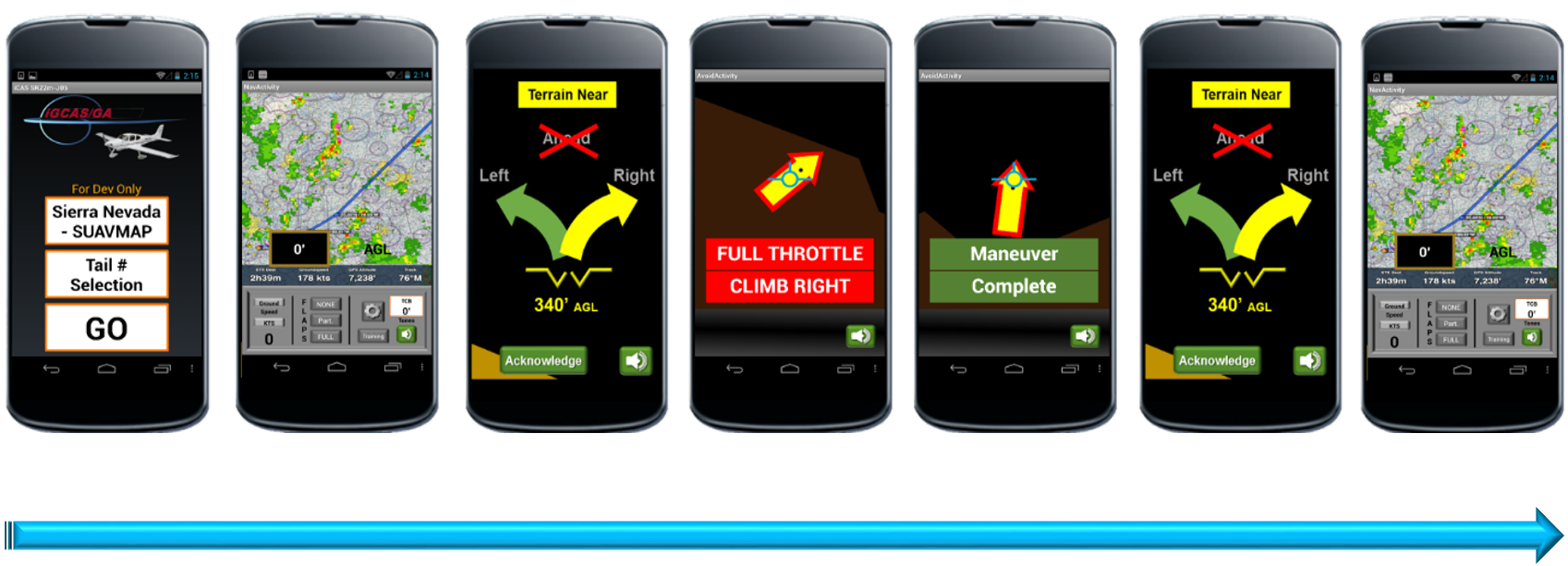Research Project
EVAA (Expandable Variable Autonomy Architecture) Operator Interface Design
Motivation/Research Problem
NASA Armstrong developed an Expandable Variable Autonomy Architecture (EVAA) framework to support multi-level autonomous piloting systems. This hierarchical autonomous system framework depends on deterministic systems with higher authority to protect against catastrophic piloting faults, faulty mission planning or execution, and inappropriate flight activities. The EVAA provides the framework for analytical systems that can learn, predict, and adapt to both routine and emergency situations. It can also be designed to allow a lower-level certification for machine learning subsystems. The art and design team at ARCS is interested in exploring visual communication methods to explain the complex AI systems into salient real-time information a human can understand. These can be valuable in the testing, observation, and evaluation of the EVAA framework. A novel approach to user experience and user interface design can have the potential to improve the overall success of the program.
Research Team
Collaborator:
- Mark Skoog: primary Armstrong contact, and directly involved in the work
Faculty:
- Joe Bautista: relevant ARCS Co-Investigator
Student Team:
- Kayla Mesina
- Ashley Santiago
- Andila Wijekulasuriya
- Erica Bettencourt

Research Questions and Research Objectives
- How do we demonstrate or visualize the flight test process when observing pre, during, and post-flight?
- How do we anticipate what it’s doing and what should be communicated to controllers and reviewers?
- How do we show a larger mission and its progress? How would operators want to decide what to do with those?
- What explainable elements decrease/increase when it comes to autonomous systems or missions?
- How do you communicate complex AI systems into salient information a human can understand in real-time when it comes to autonomous payload delivery?
Research Methods
Usability Testing Research
- Read through/understand existing research results
- Additional research to explain why existing designs are not effective
- Colors, fonts, spacing, user concerns and impediments
Design Process – Wireframe new Interfaces
- Low-mid fidelity
- High fidelity prototype of visual design
Testing
- Test functionality
- feedback from operators
Research Deliverables and Products
The anticipated deliverable is a user interface system developed for mobile devices that help communicate to operators of the mission status in an effective way. The intent is to present and develop a paper on this project at a future conference in both Science/Technology and User Experience Design disciplines.
Research Timeline
Start Date: April 2020
End Date: March 2021
Research Team
Leading Researcher:
- Joe Bautista: relevant ARCS Co-Investigator
Collaborator:
- Mark Skoog: primary Armstrong contact, and directly involved in the work
Student Team:
- Kayla Mesina
- Ashley Santiago
- Andila Wijekulasuriya
- Erica Bettencourt
Funding
- Funding Organization: NASA
- Funding Program: MIRO
